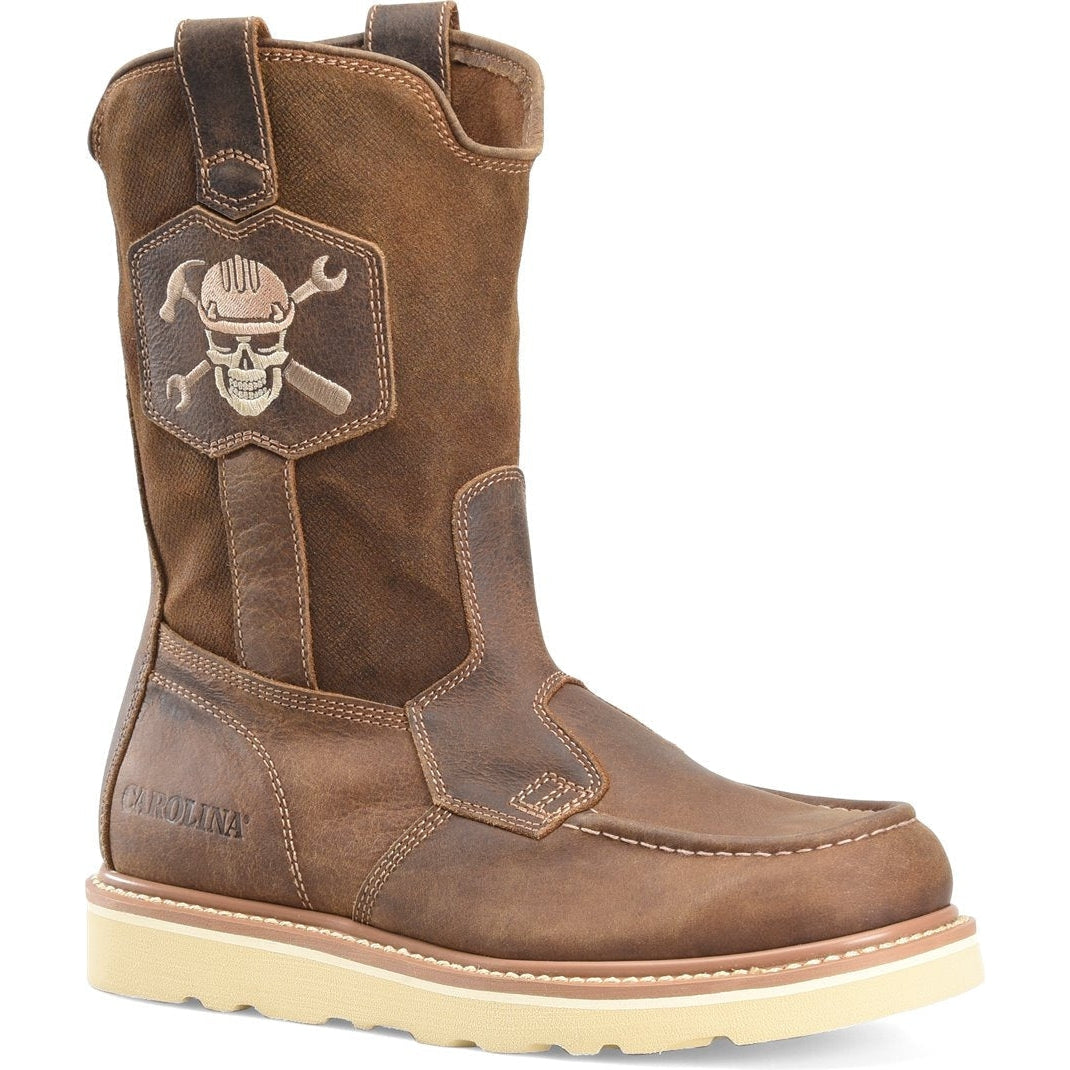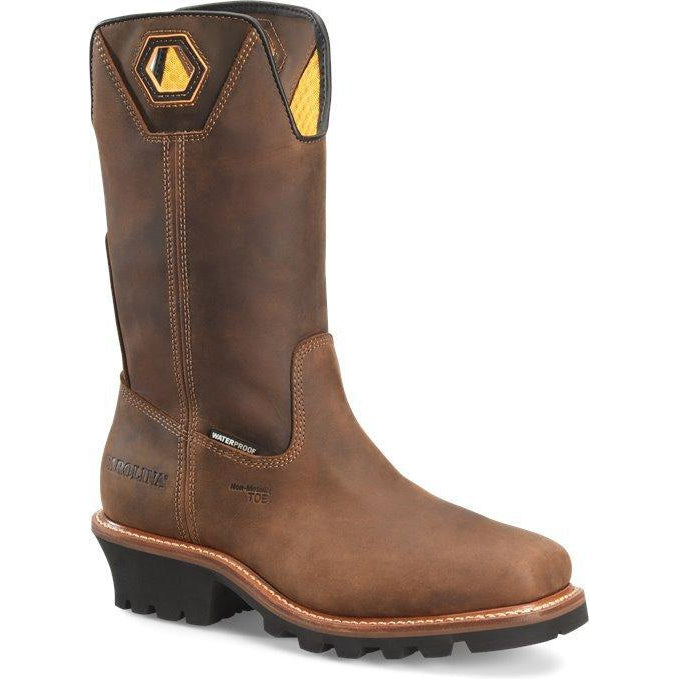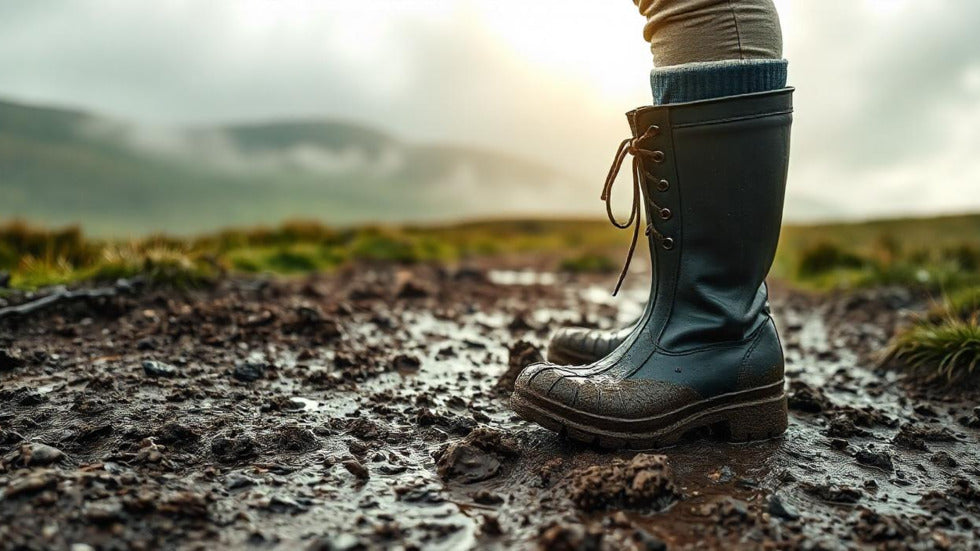Wellington boots are a staple for outdoor adventures, offering protection against muddy conditions, soggy winter weather, and extreme conditions. Whether heading out for countryside dog walks, city wear, or tackling adverse weather, choosing the right Wellington size and fit is crucial for comfort and performance. If you need durable options for tough environments, consider the best Wellington work boots designed for long-lasting protection and support.
Understanding Wellington Size and Fit
Finding the perfect Wellington boot size requires considering foot length, calf width, and intended use. Some boots run true to size, while others allow room for thicker socks or neoprene insoles. Additionally, features like adjustable gussets and removable insoles offer customization for different foot shapes and range of calf sizes.
This guide will help you navigate Wellington boot sizing, size charts, calf size considerations, and customization options to find the correct size for your needs.
Are Rain Boots Supposed To Be Loose?
A common question when buying waterproof boots is whether they should fit snugly or have extra room. The answer depends on the style of boot, usage, and personal comfort preference
- Standard wellies tend to have a roomier fit to accommodate thicker socks, fleece-lined neoprene, or removable insoles for extra warmth.
- A slightly loose fit is normal, especially for outdoor activities in colder conditions where you may want to layer up.
- If your boots are too loose, they can cause heel slippage or make walking long distances, such as an eight-mile walk, uncomfortable.
Tip: If your boots feel too loose, add neoprene insoles or wear a pair of socks for a better fit.

How Are Wellington Boots Supposed To Fit?
The perfect Wellington size and fit should provide:
- A snug but comfortable grip around the ankle to prevent excessive movement.
- Enough space for a pair of socks without feeling too tight.
- A secure but flexible fit around the calf to allow movement without restriction.
For those with wider feet or a range of calf sizes, selecting a boot with stretchy neoprene or an adjustable gusset strap can make a difference.
Should Wellies Be Tight Around The Calf?
Your wellies should fit securely around your calf size without being too tight. Consider:
- Mid-calf boots provide more flexibility for wider calves and those who prefer a looser fit.
- Calf-high leather boots or knee-height styles (44cm-46cm height) can offer extra grip and warmth but may feel restrictive if you have a wider foot or bigger calf size.
- Waterproof gussets and adjustable gussets allow for customization options to achieve a comfortable fit.
Tip: If your boots feel too tight, look for styles with a wide range of sizes or an adjustable gusset strap for a more personalized fit.
Why Do You Store Wellies Upside Down?
Storing rubber boots upside down helps to:
- Prevent moisture build-up, keeping wet socks and soggy conditions at bay.
- Allow soft neoprene lining and cushy neoprene lining to air out properly.
- Maintain the shape of the shaft design and prevent unnecessary creasing.
For long-term storage, place your boots in a cool, dry area and use boot shapers or newspaper inside to absorb excess moisture.
Are Wellies Oversized?
Many standard wellies are slightly oversized to provide extra room for comfort, insulation, and flexibility in different weather conditions. This additional space ensures your boots can accommodate various layers and accessories without feeling restrictive.

Why Are Wellington Boots Designed to Be Slightly Oversized?
-
Accommodating Thicker Socks or Removable Insoles
- During cold weather or extended outdoor use, many wearers prefer to layer up with thicker wool socks or thermal insoles for added cozy warmth.
- Some wellies come with removable insoles, allowing for customization based on your foot shape and preferred level of cushioning.
- If your boots feel too loose with standard socks, try swapping them for a pair of thicker socks or inserting neoprene insoles for a snugger fit.
-
Fleece-Lined Neoprene for Cold Weather
- Many high-performance Wellington boots feature fleece-lined neoprene for extra warmth during soggy winter weather.
- This lining is an insulating barrier, keeping wet feet dry and protected from harsh conditions.
- If you opt for a fleece-lined pair, factor in the additional padding when selecting your size.
-
Cushy Neoprene Lining for Comfort
- Some modern wellies feature a cushy neoprene lining that molds to your foot over time.
- This adds a layer of softness while enhancing moisture resistance, making it an ideal choice for long periods spent outdoors.
- However, wearing thicker socks or an extra insole can help improve the fit if the lining feels too loose.
What to Do If Your Wellies Feel Too Big?
If you find that your wellies feel too large or cause excessive foot movement, you can:
- Size down by half a size if available, especially if you wear them without extra layers.
- Use additional insoles to create a more supportive, custom fit.
- Wear thermal or hiking socks to fill in any extra space and improve warmth.
- Opt for adjustable gusset styles to allow for better calf and foot fit.
A well-fitting pair of boots should be secure yet flexible, allowing for free movement without slipping. If your boots feel too roomy, a few simple adjustments can enhance comfort and performance, ensuring they remain a reliable choice for outdoor activities in all types of weather.
[prc-collections-carousel]
Wellington Size and Fit Guide
Wellington Size and Fit Chart
|
US Size |
UK Size |
EU Size |
Foot Length (inches) |
|---|---|---|---|
|
5 |
3 |
36 |
8.7 |
|
6 |
4 |
37 |
9.1 |
|
7 |
5 |
38 |
9.4 |
|
8 |
6 |
39 |
9.8 |
|
9 |
7 |
41 |
10.2 |
|
10 |
8 |
42 |
10.6 |
To ensure accurate sizing, refer to this Wellies size guide chart before purchasing. Follow these steps to find the best Wellington boot:
- Measure your foot length using a ruler and compare it with the size chart.
- Consider your normal shoe size, but check if the brand recommends sizing up or down.
- Check the range of sizes available, especially if you need a wider fit.
- Look for boots with adjustable gusset straps for calf size variations.
Choosing the right Wellington size and fit based on body measurements ensures a comfortable and supportive fit. Shop our collection of Wellington boots for your perfect pair!
Frequently Asked Questions
How Do I Know If My Wellies Are Too Small?
If your toe touches the front or you feel pressure on your foot and calf, your wellies might be too small. Opt for a larger size or a style with a wider fit.
What’s The Best Boot Style For Wet Weather?
For wet weather and city pavements, go for slip-resistant soles, super-grippy soles, or tri-density soles for excellent traction.
Are Wellies Good For Long Walks?
Look for boots with super-sturdy Vibram® Soles for all-terrain grip and superior grip during muddy walks and leisure activities.
Can I Wear Wellies In Cold Weather?
Styles with neoprene lining, fleece-lined neoprene, or removable insoles provide cozy warmth during the winter.






